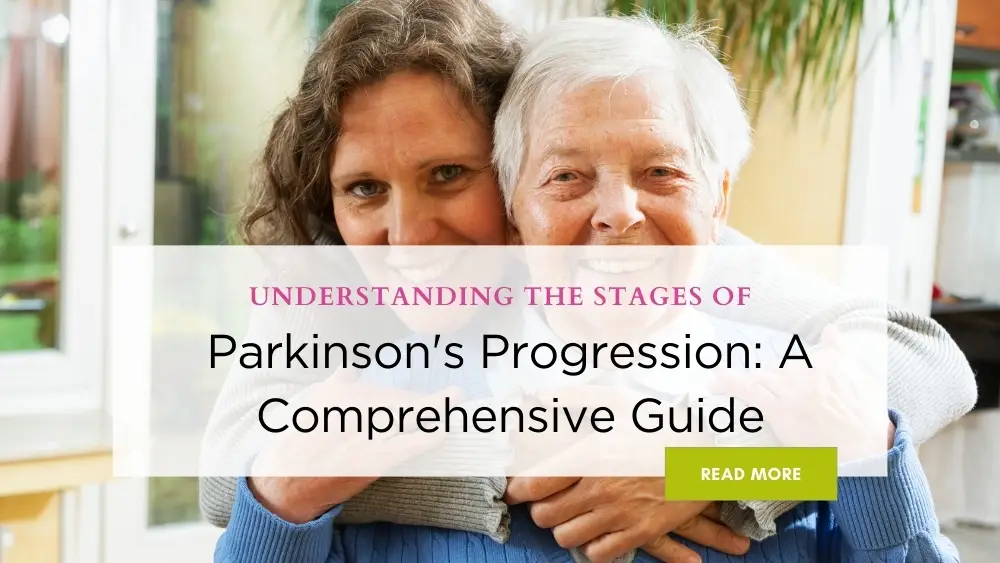Parkinson’s progression is part of living with Parkinson’s disease—a progressive neurological disorder that affects movement and can have a significant impact on daily life. It occurs when certain nerve cells in the brain become damaged or die, leading to a decrease in dopamine, a chemical responsible for smooth, coordinated muscle movements. As Parkinson’s progresses, individuals may experience tremors, stiffness, and difficulty with balance and coordination, alongside other cognitive and emotional challenges.
Understanding it is crucial for both individuals and their families. The stages of Parkinson’s disease can vary greatly from person to person, and recognizing the changes early on can help in managing symptoms and planning for the future. In this guide, we’ll explore the different stages of Parkinson’s progression, offering insights into how it impacts the body and how proper care can make all the difference in enhancing quality of life.
Understanding Parkinson’s Disease
Parkinson’s disease is a long-term, progressive condition that affects the brain, particularly the areas responsible for controlling movement. It occurs when the brain cells that produce dopamine—a neurotransmitter that helps with smooth muscle coordination—begin to deteriorate. As dopamine levels decrease, the brain struggles to send the proper signals to the muscles, which leads to the characteristic movement difficulties seen in those with Parkinson’s.
In the early stages of Parkinson’s progression, symptoms are often subtle and can be easy to overlook. Common early signs include tremors, especially in the hands, and stiffness or rigidity in the limbs and torso. As the disease advances, individuals may also experience difficulty with balance, slower movements (bradykinesia), and a reduced range of motion. Over time, these symptoms can become more pronounced, making everyday tasks increasingly challenging. Recognizing these early signs of Parkinson’s progression is vital for getting the appropriate care and managing the condition effectively.
The 5 Stages of Parkinson’s Progression

Understanding the 5 stages of Parkinson’s progression is key to managing the condition. Each stage comes with unique challenges, from mild symptoms to severe disability. In this guide, we will explore the stages, helping individuals and families better navigate the progression of Parkinson’s and plan accordingly.
Stage 1: The Initial Symptoms
During the first stage, symptoms are mild and often not disabling. People may experience slight tremors or stiffness in one hand or other subtle changes in posture. Early Parkinson’s symptoms can easily be overlooked, but early detection can make a significant difference. Recognizing these symptoms allows individuals to seek proper treatment and manage their condition proactively.
Stage 2: Symptoms Become More Noticeable
As Parkinson’s disease progresses, symptoms become more noticeable. At this stage, both sides of the body are affected, causing bilateral symptoms. Common issues include more pronounced tremors and stiffness, which can make daily tasks like brushing teeth or dressing more difficult. The impact on daily activities becomes more significant, and additional Parkinson’s support may be needed.
Stage 3: Loss of Balance and Slowed Movement
Stage 3 marks a noticeable change in Parkinson’s progression, as balance becomes more compromised, and movement slows. Walking, standing, and maintaining balance become challenging, and falls may become more frequent. This stage often requires increased assistance with mobility and a higher level of caregiving, as daily functions become more difficult.
Stage 4: Severe Disability
By stage 4, the impact of Parkinson’s progression on daily life is severe. People may need assistance with most activities, including eating, dressing, and moving. Walking or standing without support becomes difficult, and individuals often require a dedicated caregiver for routine tasks. Families may begin exploring options for intensive Parkinson’s treatment and caregiving, like live-in care.
Stage 5: Advanced Parkinson’s Disease
In the final stage, individuals become fully dependent on caregivers for daily tasks. Difficulty swallowing, severe rigidity, and mobility challenges are common. Full-time care is often necessary, and families rely on professional caregivers to ensure comfort and dignity during this advanced stage.
Factors Influencing Parkinson’s Progression

Parkinson’s progression can differ widely among individuals, influenced by factors like age, genetics, and treatment. Age plays a role, as those diagnosed later may experience faster progression, while younger individuals may live with Parkinson’s longer but with slower progression. Genetics also impacts how quickly symptoms develop, with certain gene mutations affecting disease severity. Finally, Parkinson’s treatment is crucial in slowing progression—early intervention with medications and therapies can help manage symptoms and improve quality of life.
Managing Parkinson’s Progression
Managing Parkinson’s progression starts with early intervention and ongoing medical care. Medications like dopamine replacements can help manage motor symptoms, while therapies like physical therapy can maintain mobility and balance. Regular check-ups with healthcare professionals are essential to adjust treatments as symptoms evolve. A holistic approach, combining medication, therapy, and support, can significantly slow Parkinson’s progression and improve daily living.
Need Support for Parkinson’s Progression? Contact Live In Care Angels for Expert Care
In conclusion, understanding the 5 stages of Parkinson’s progression is crucial for managing the condition. Whether dealing with the early Parkinson’s symptoms or the challenges of advanced stages, timely intervention and expert care are key to maintaining a good quality of life.
At Live In Care Angels, we are dedicated to offering compassionate, personalized care every step of the way. Our team of trained caregivers provides the support you need to manage Parkinson’s progression with dignity and comfort. If you notice any symptoms or need more information, don’t hesitate to reach out for guidance.


Leave a Reply
You must be logged in to post a comment.